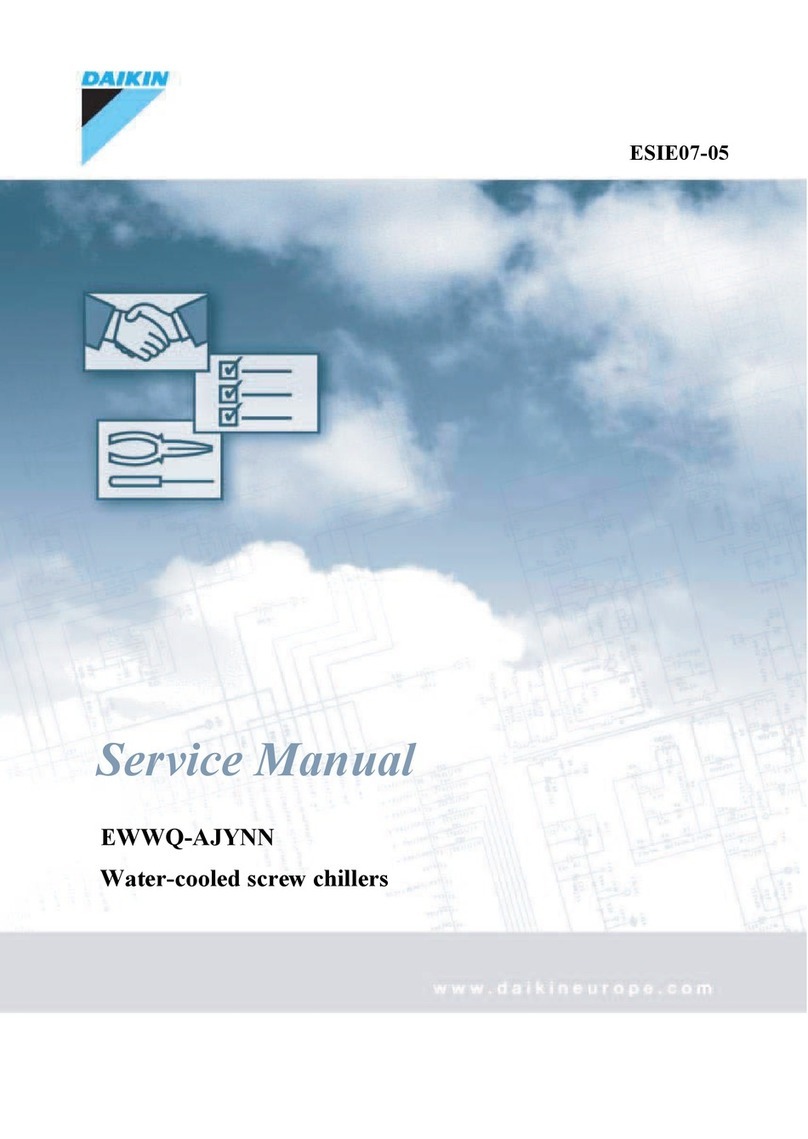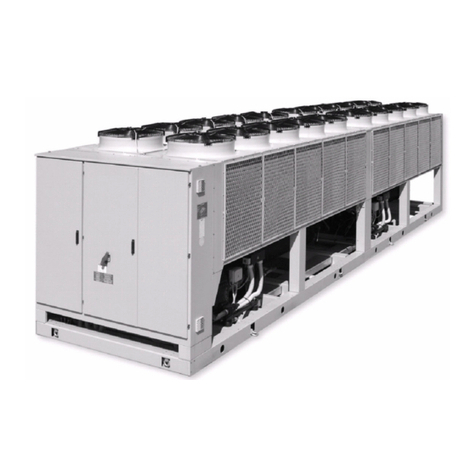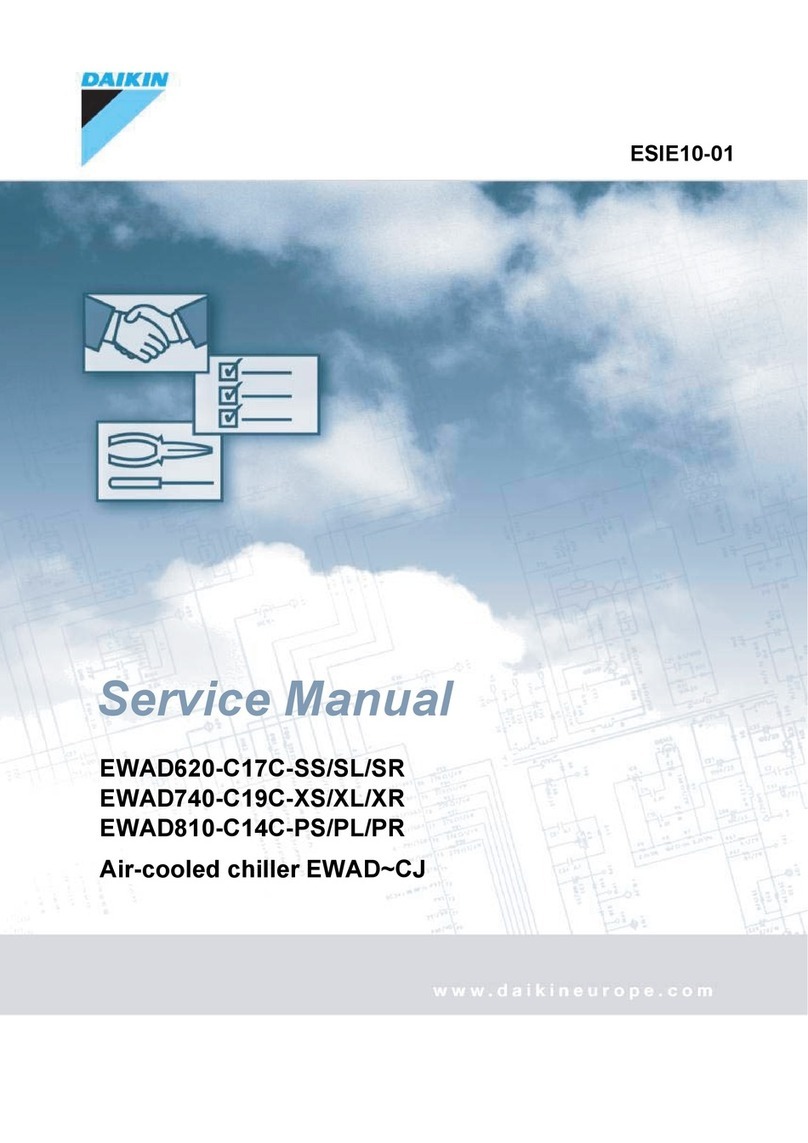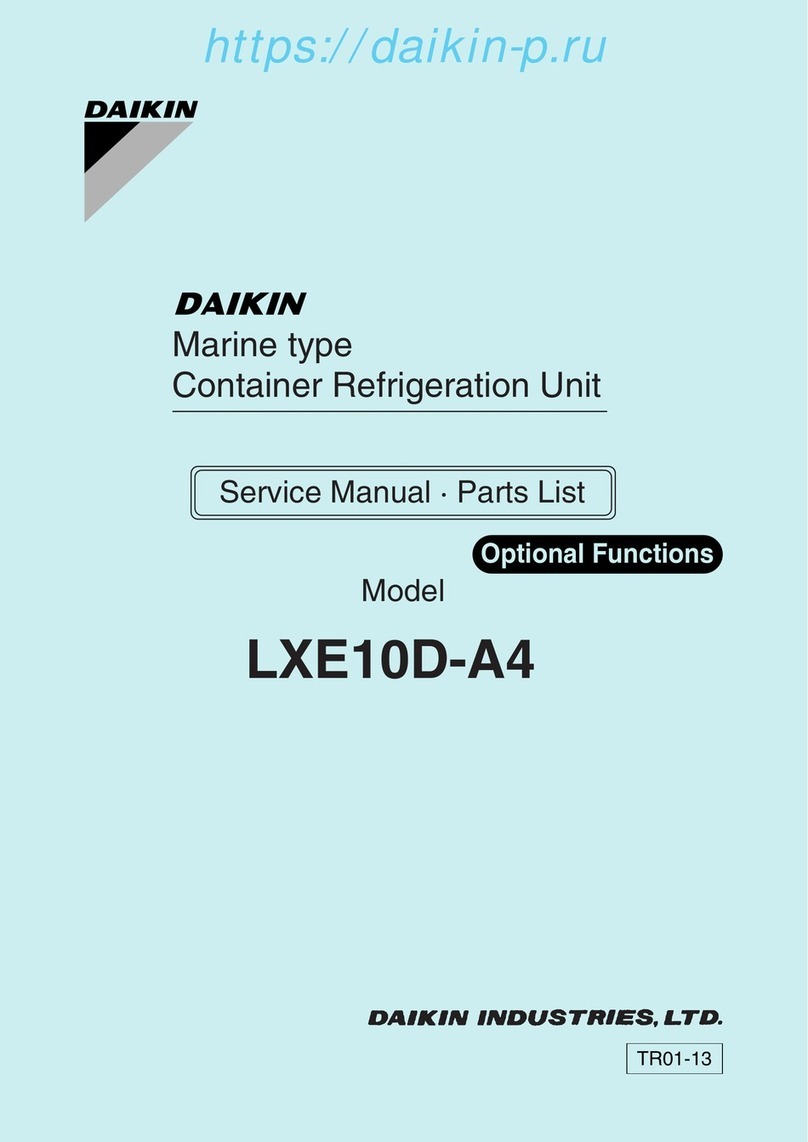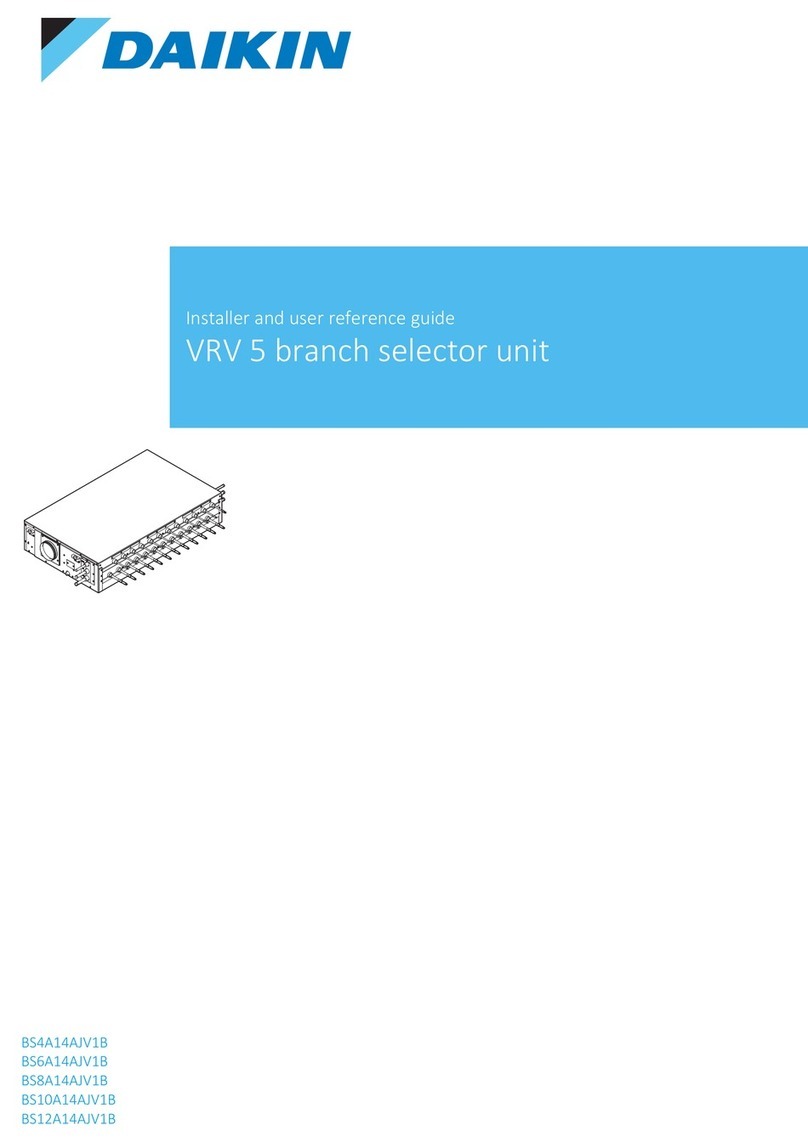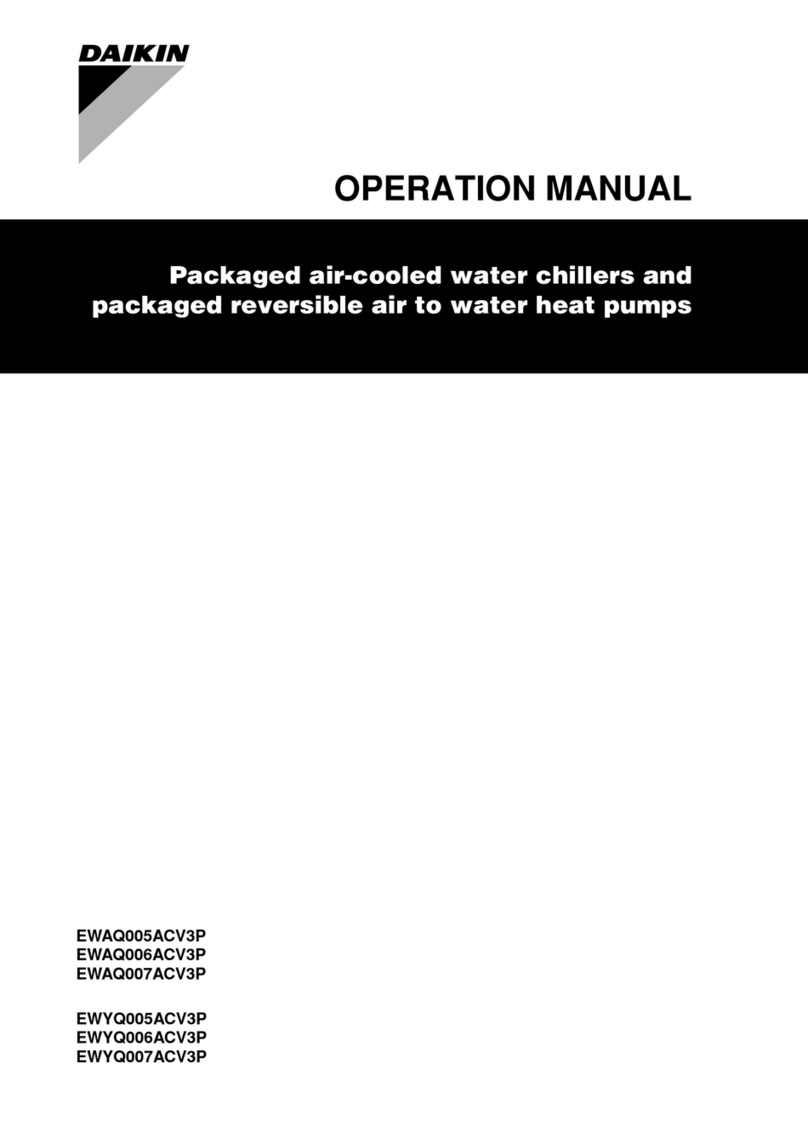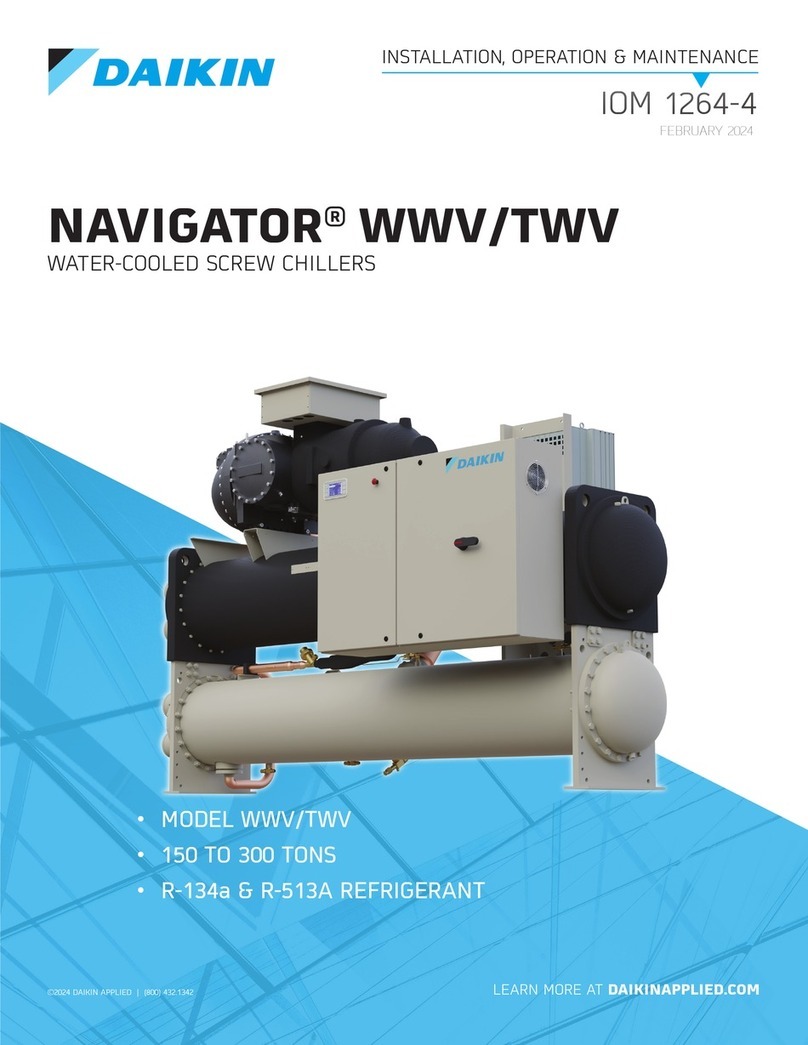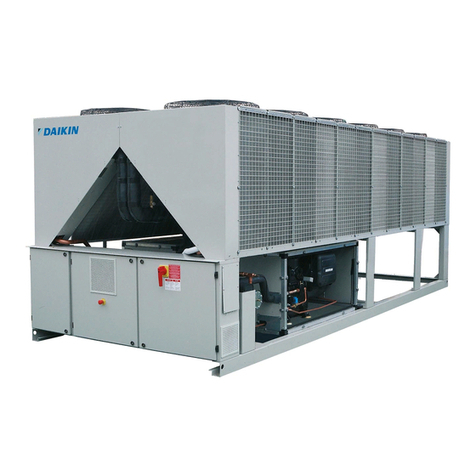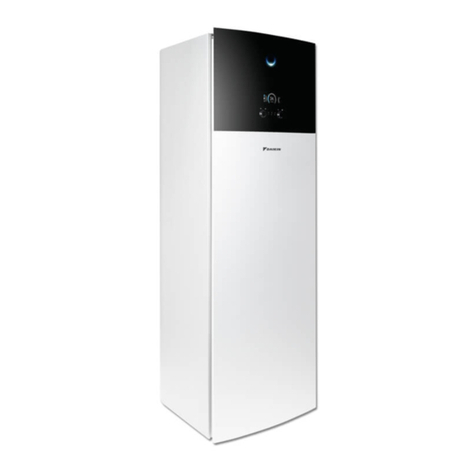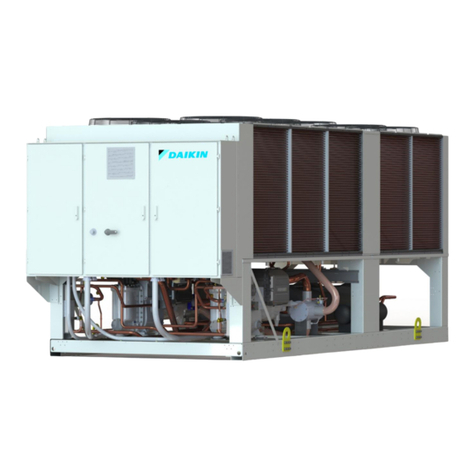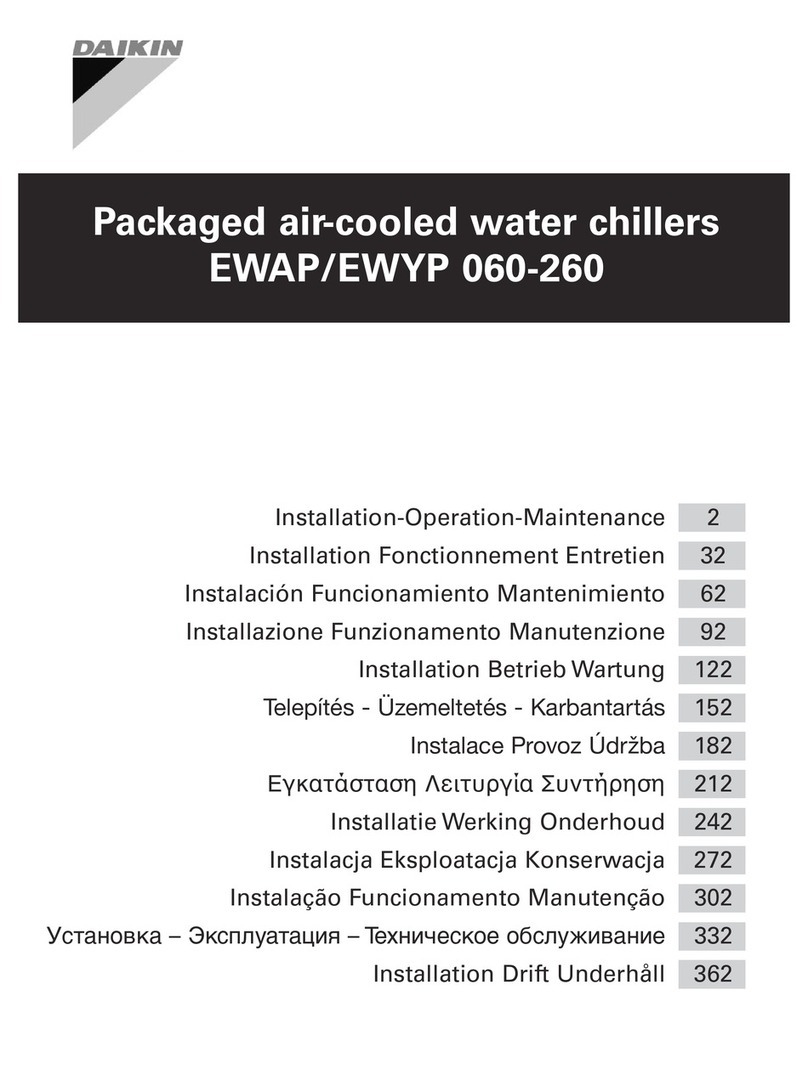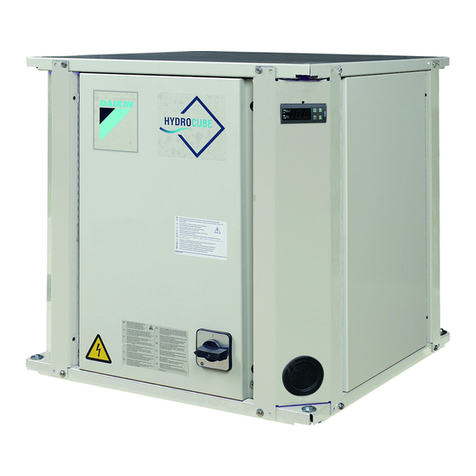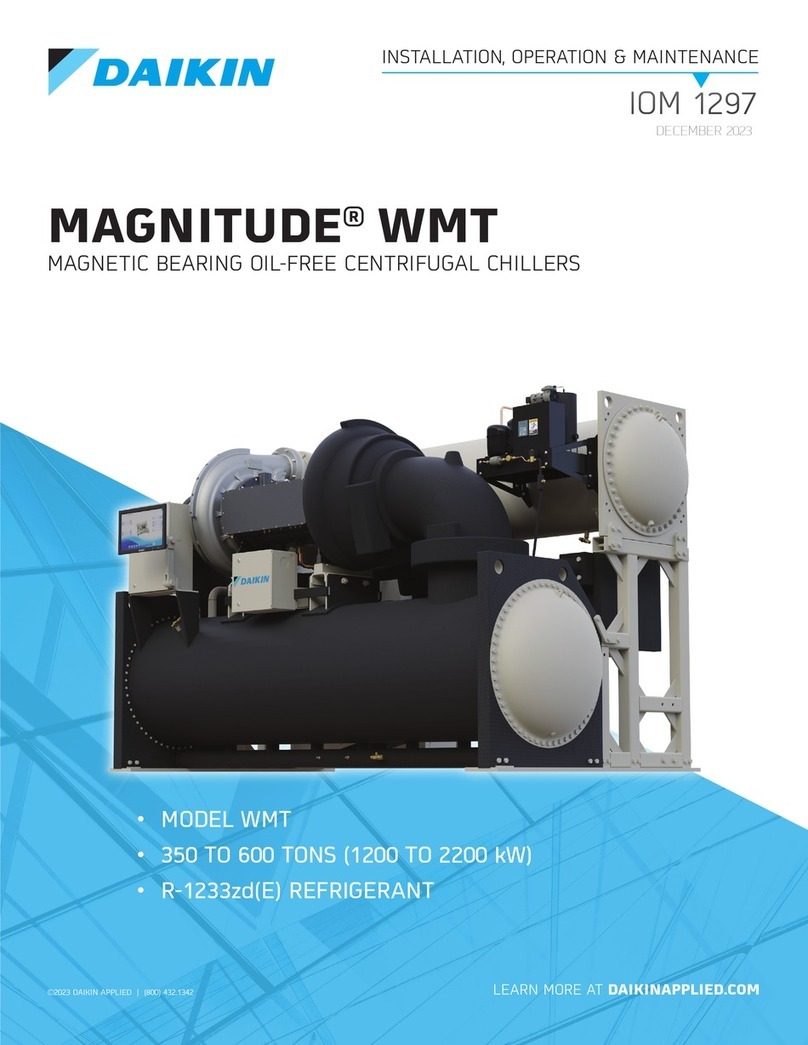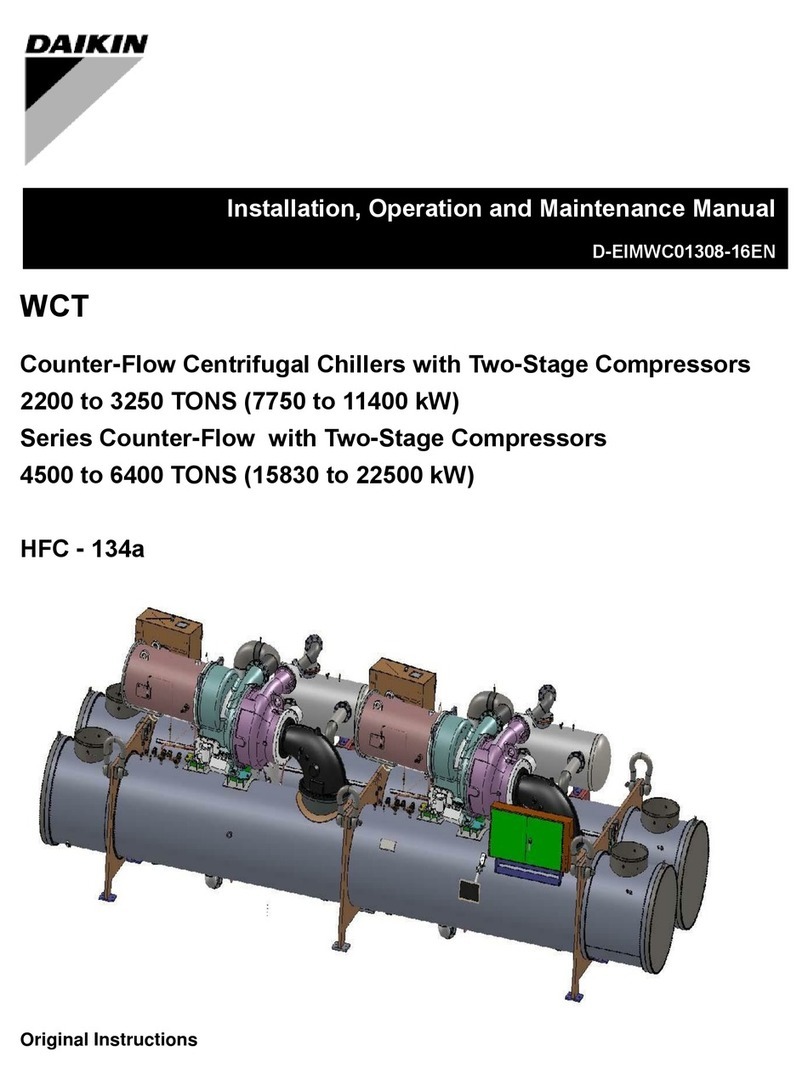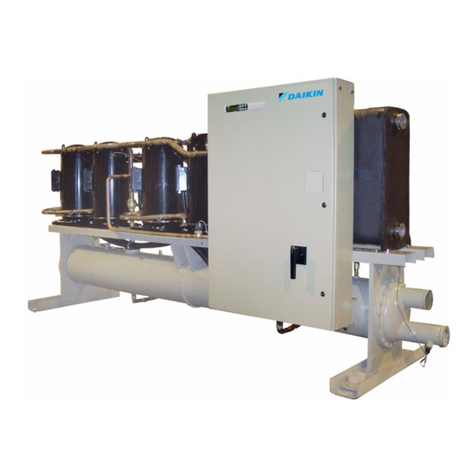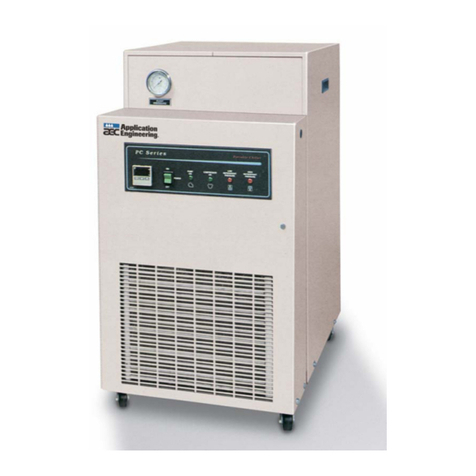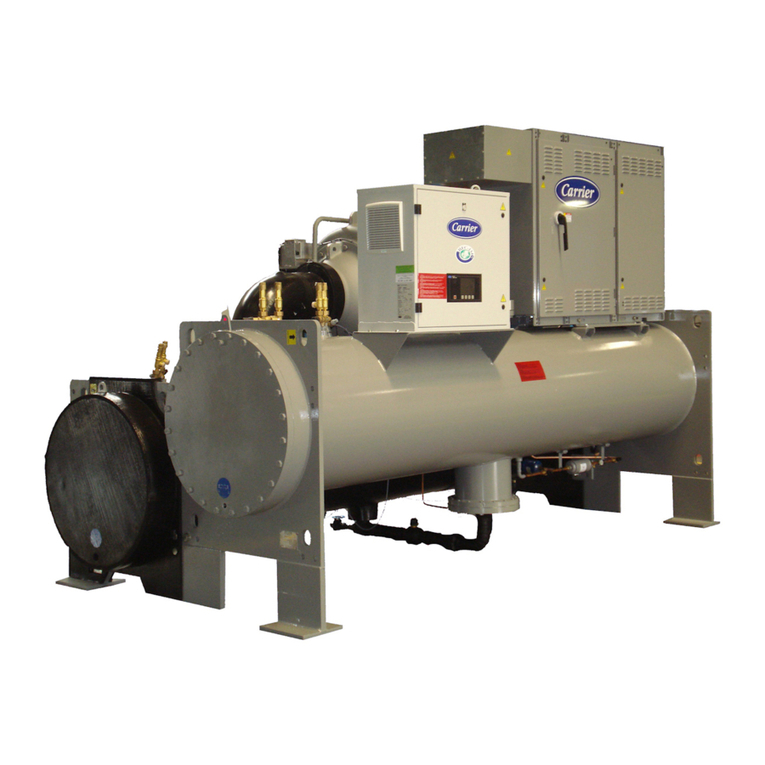
iom-clicsa-cf-eng www.clima-ex.com
6
EFFICIENCY
Our units are designed to meet the needs of any project.
Our intelligent process controllers and smart temperature sensors
provide maximum performance and energy savings.
The system automatically modifies the operating mode to maintain
optimum system conditions, making it very easy to operate.
All temperature sensors are calibrated and adjusted at the factory
prior to shipment. Start-up should be performed by a qualified
technician, during initial start-up the unit will be adjusted to local
conditions and all operating points will be checked.
Once the unit has been set up, operation is a matter of pressing
the start/stop button until it is certain that the unit is operating
properly.
After this the unit will operate automatically, turning itself on
according to the demand of the refrigeration system and local
conditions.
The units feature intelligent processors and sensors that
automatically control the temperature at optimum operating
conditions.
The units were designed to be coupled with each other and
combined to meet different load variations (Tandem Installation).
Up to 10 modules can be combined; these combinations can be
made with Water Chiller Units of different capacities ranging from
25 to 250 tons. Capacities vary depending on the number and
type of units.
SAFETY
All structures are made of galvanized sheet steel, coated with
electrostatic baked-on paint to ensure long durability and freedom
from corrosion under all weather conditions, such as direct
sunlight, rain and wind.
All units are designed to fit into a small installation space, thus
eliminating large installation areas. We use only high quality
components to ensure durability and safety even in harsh
environmental conditions.
NOTE: For applications in tropical climates our units are
coated inside and out with corrosion protection
Our products have AHRI efficiency certifications and ETL safety
certifications, in addition to meeting all industry safety standards.
We are members of the American Society of Heating,
Refrigerating and Air-Conditioning Engineers (ASHRAE). To
show our commitment to our customers and stakeholders; our
equipment comes with a 1 year major warranty after start-up.
Our units use R410A refrigerant, which is harmless to the ozone
layer and is non-toxic and non-flammable, even in case of leakage.
Finally, the efficiency of the heat exchanger and its modular
design allow for quick and easy installation.
DESIGN
Research conducted by the Engineering Department has resulted
in units with high design efficiency and optimum performance.
The selection of the main components, our quality and control
system guarantee high performance and safety.
All major components are rigorously tested and qualified before
installation. Each designed unit has undergone long hours of
rigorous testing to ensure the safety, durability and quality of the
entire system.
COMMUNICATION
The units can be controlled in tandem mode and/or can be
connected to a central control unit. Operation and user access
will be through a 7” color touch screen.
Our units can be managed through different communication
protocols; such as Modbus and BACnet, the most commonly used
protocols in the Air Conditioning industry.
Our units keep track of all programmable variables in real
time, such as performance monitoring, specific alarms of the
refrigeration cycle and the electrical system; as well as detection
of external factors such as fire or flood (optional sensors).
The control and monitoring system ensures the correct operation
of the unit by monitoring in real time the condition of the major
components (high or low refrigerant pressure, compressor and
fan motor conditions, etc.).
In case of failure, the event will be recorded for later analysis,
facilitating the localization of a possible failure and its solution.
INSTALLATION
The units have been designed for easy installation. Screw
connections provide easy installation of the water piping, which
are located on both sides of the unit, so that the piping can be
connected to either side of the unit.
The individual assembly of the units reduces installation cost, the
units have a rigid base that balances the weight of the unit and
allows for easy installation.
MAINTENANCE
The simplicity in the design of each unit allows for maximum
ease of maintenance. All major components are available to
maintenance personnel by simply opening the service panel.
If an emergency shutdown occurs, the control section will indicate
in detail the cause of the failure, helping to facilitate and accelerate
troubleshooting.
